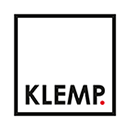General information
- materials are printed according to graphic designs provided by the customer. There is also the possibility of preparing a professional graphic design by our graphic team. It is an additional service.
- every graphic file before being submitted for printing is checked by us in terms of technical preparation for printing. Incorrect preparation of the file, and thus the need to make changes in it, may affect the time of the order. We are not responsible for printing errors resulting from incorrect preparation of the file for printing by the customer, as well as for factual errors in the design (e.g. in the texts).
- if you have questions or problems that you will not find answered in this guide, you can contact us.
- if there is a need to make changes to the file, our graphic department will contact you via email or phone. To facilitate contact in the order, you can give the direct contact to the person who prepared the project for printing.
- if our graphic department will be forced to make changes to the file, which may change its appearance in relation to the file you send, it will send you an email preview of the file after the changes in order to be able to accept it for printing.
Specification of preparing projects for printing
1. Documents should be prepared in the form of files:
- TIFF with LZW compression
- JPG
- scale 1: 1
- CMYK color palette
For the implementation, the printing house can accept open files: cdr, ai, eps, indd, psd meeting the following conditions:
- fonts must be converted into curves
- ai, eps, indd, psd files must be saved in Adobe CS6
- cdr files must be saved to the Corel X5 version
- an preview file must also be provided
The printing house is not responsible for the color and substantive quality when printing from pdf files prepared
in CorelDRAW (* .cdr)
2. Bitmap resolution in graphic files
Bitmap resolution (including tiff files) in 1: 1 scale
- up to A4 size - 300 ppi
- above A4 size - 200 ppi
- up to 2m2 - 150 ppi
- up to 2-5 m2 - 100 ppi
- up to 5-25 m2 - 80 ppi
- up to 25-50 m2 - 50 ppi
- above 50- m2 - 30 ppi
3. Bleed printing, finishing and safe print area
- Each file containing graphics that goes beyond the page format should have bleeds.
- The size of the bleeds will vary depending on the material used for printing and the ink.
- Hard materials (e.g. dibond, hard / foamed PCV) - 0.5 cm, with a double sided print, the recommended bleed is 1 cm.
- Banners, mesh - the file should have a net format, without bleeds, despite the graphics that goes outside the bleed - the surplus for the binding and the seal the printing house adds automatically
4. Safe print area
Hard materials
- Hard materials (e.g. dibond, hard / foamed PCV) up to B1 - 0.5 cm
- Hard materials (e.g. dibond, hard / foamed PCV) above B1 - 1-2 cm
Frontlight, backlight, mesh banners etc.
- cutting to size + eyelets - 3 cm
- seal / binding - 4 cm
- pocket (double sided banner) - 4 cm + flat pocket - plotter / cutter / cut to size - 0.5 cm
The area of safe printing for textile materials:
- up to 5m - 6cm
- from 5 to 10m - 12 cm
- from 10 to 20m - 25 cm
- from 20 to 30m - 35 cm
- from 30 to 40m - 45 cm
5. How can you send us files for printing?
Graphic projects please send directly to the email projects@klemp.pl or via https://wetransfer.com.
